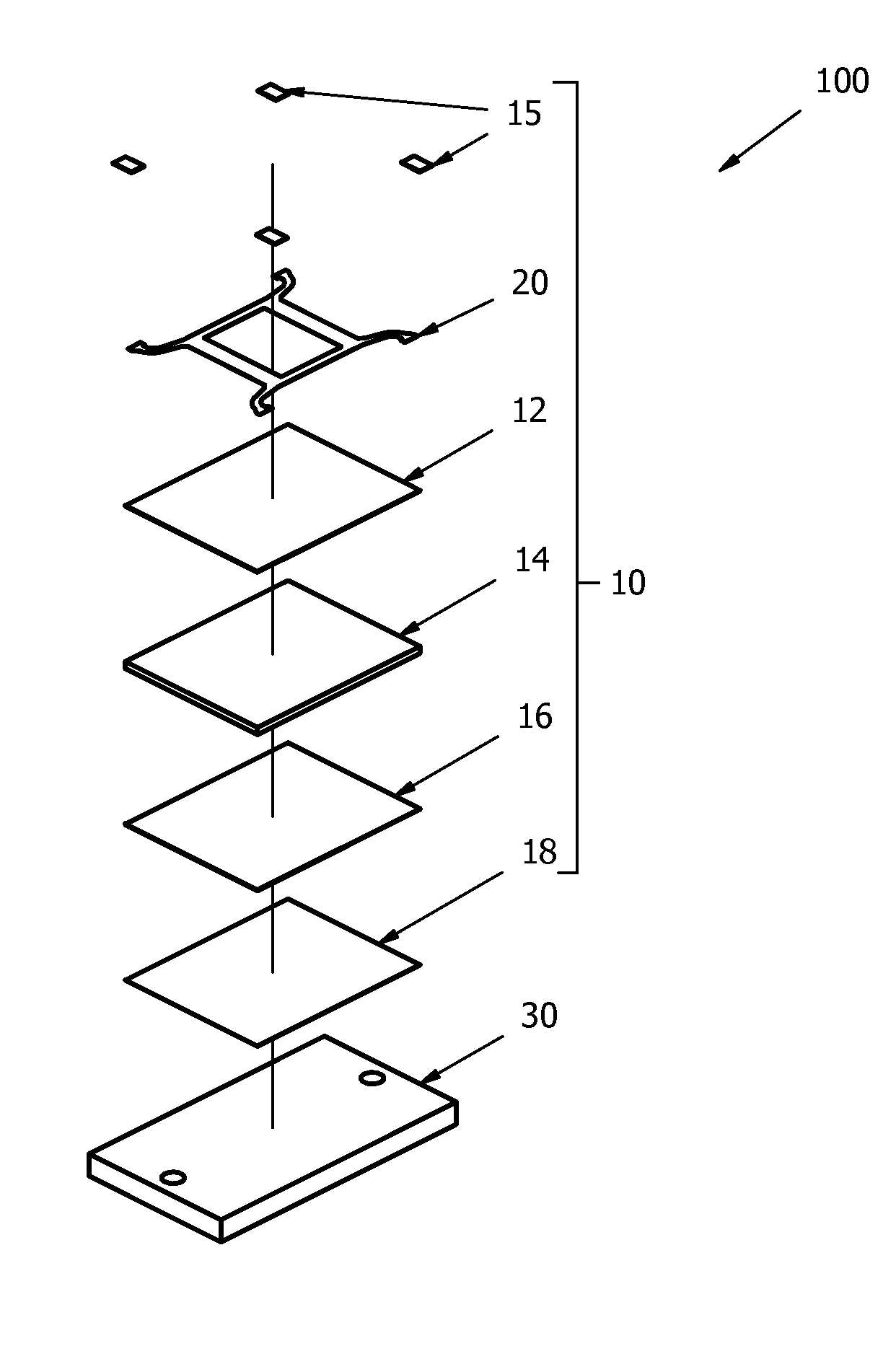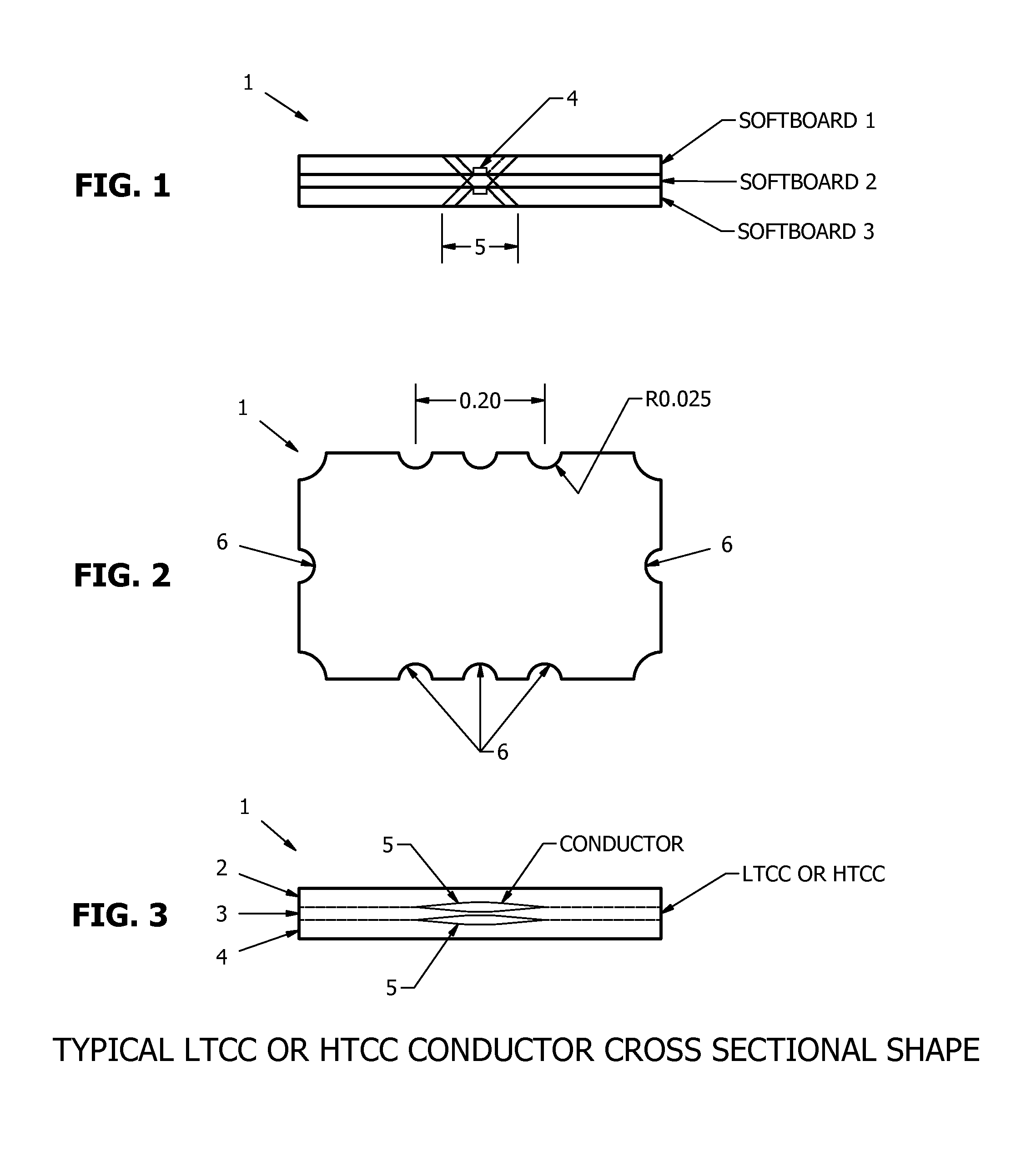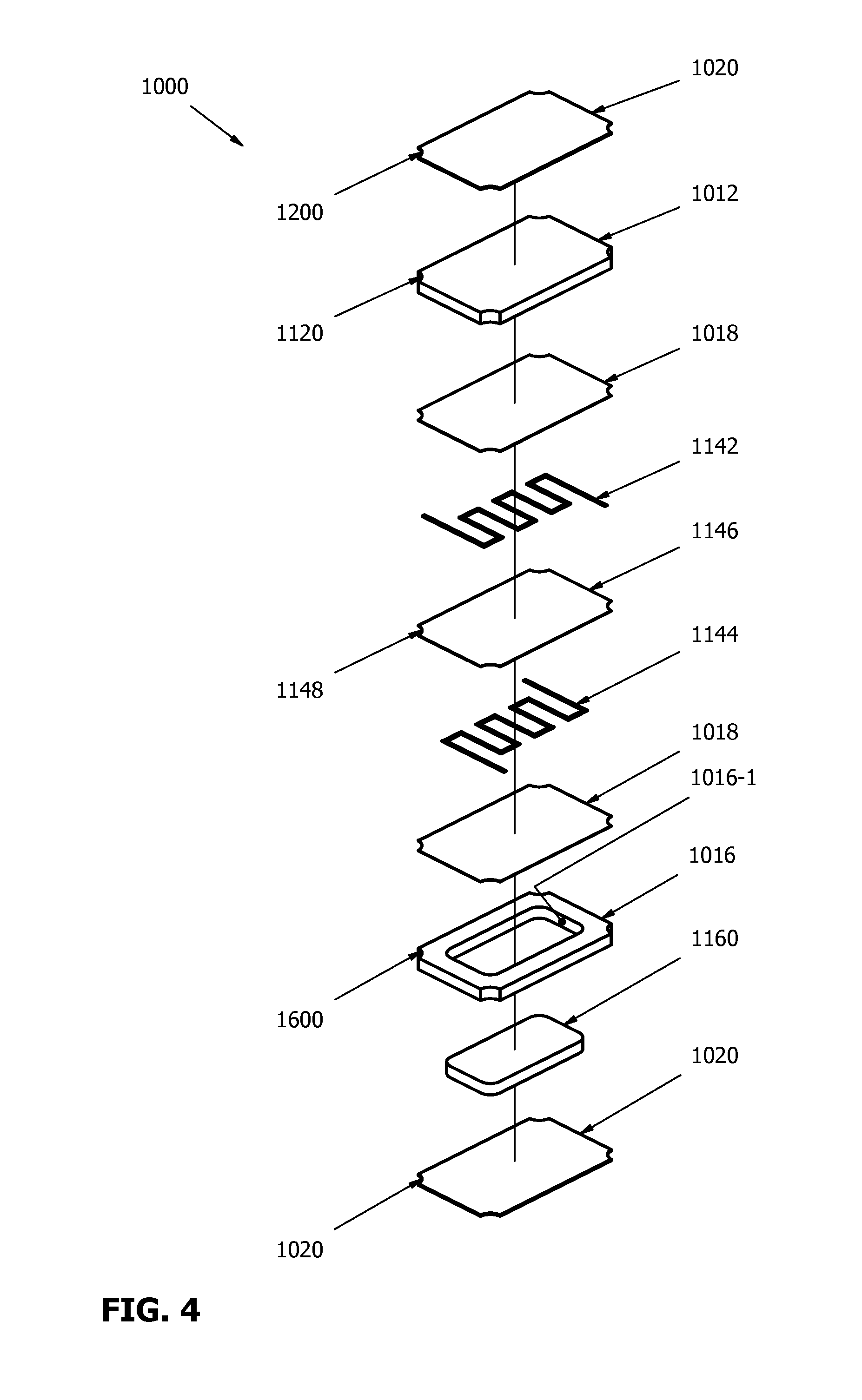Stress Relieved High Power RF Circuit
a high-power, stress-free technology, applied in the direction of waveguides, paper/cardboard containers, containers, etc., can solve the problems of low maximum power handling ability of softboard based rf circuits, low cost, and energy dissipation, and achieve low thermal stress, good electrical performance, and high thermal conductivity and mot
- Summary
- Abstract
- Description
- Claims
- Application Information
AI Technical Summary
Benefits of technology
Problems solved by technology
Method used
Image
Examples
Embodiment Construction
[0064]Reference will now be made in detail to the present exemplary embodiments of the invention, examples of which are illustrated in the accompanying drawings. Wherever possible, the same reference numbers will be used throughout the drawings to refer to the same or like parts. An exemplary embodiment of the stress relieved high power circuit of the present invention is shown in FIG. 5A, and is designated generally throughout by reference numeral 10.
[0065]As embodied herein, and depicted in FIG. 5A, a cross-sectional diagram of an RF coupler 10 in accordance with one embodiment of the present invention is disclosed. Specifically, a circuit layer 20 is disposed overtop a laminate comprised of various layers of dielectrics including low modulus dielectric layer 12, ceramic core 14, and another low modulus dielectric layer 16. A conductive ground plane 18 is disposed on the underside of the dielectric layer 16 to complete the microstrip circuit. In one version of this embodiment, the...
PUM
| Property | Measurement | Unit |
|---|---|---|
| Temperature coefficient of resistance | aaaaa | aaaaa |
| Temperature coefficient of resistance | aaaaa | aaaaa |
| Temperature | aaaaa | aaaaa |
Abstract
Description
Claims
Application Information
 Login to View More
Login to View More - R&D
- Intellectual Property
- Life Sciences
- Materials
- Tech Scout
- Unparalleled Data Quality
- Higher Quality Content
- 60% Fewer Hallucinations
Browse by: Latest US Patents, China's latest patents, Technical Efficacy Thesaurus, Application Domain, Technology Topic, Popular Technical Reports.
© 2025 PatSnap. All rights reserved.Legal|Privacy policy|Modern Slavery Act Transparency Statement|Sitemap|About US| Contact US: help@patsnap.com



